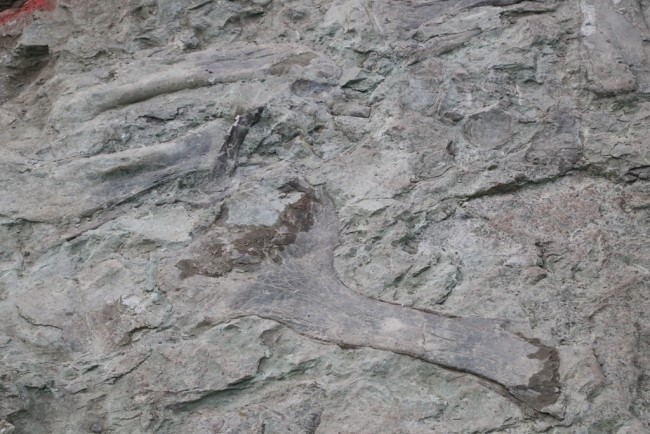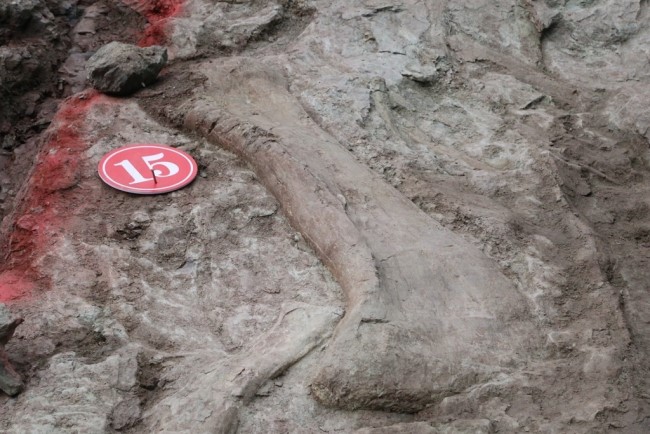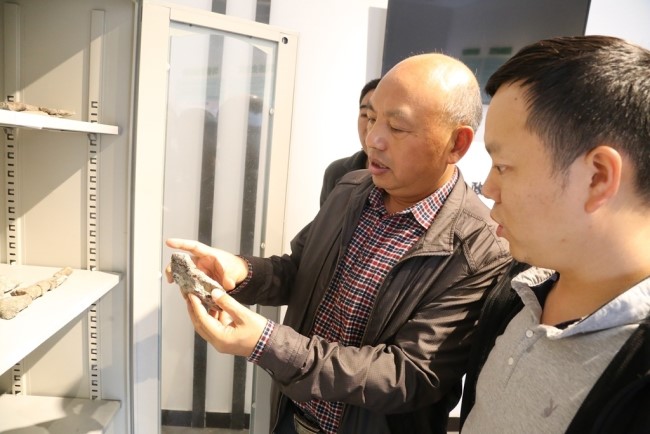Centralized burial site of Mamenchisaurus found in SW China
Wangcang, a county in Guangyuan city, Southwest China's Sichuan province, has unearthed the country's first centralized burial site of Mamenchisaurus, the longest of all sauropod dinosaur species ever found in China.

A centralized burial site of Mamenchisaurus is discovered in Guangyuan's Wangcang county, Southwest China's Sichuan province. [Photo provided by Guangyuan city]
According to a press conference held in the county on Oct 29, it is the first time that China has discovered this kind of a centralized burial site, which harbors a diverse range of Mamenchisaurus that lived during the late Jurassic period.
The Mamenchisaurus is over 20 meters long and its body measures at nearly seven meters tall.
The scientific discovery is of great significance to study the systematic transformation, living environment and biodiversity of dinosaurs in the Sichuan Basin during the Jurassic period.

A centralized burial site of Mamenchisaurus is discovered in Guangyuan's Wangcang county, Southwest China's Sichuan province. [Photo provided by Guangyuan city]
Archaeological findings show that Wangcang became a major natural habitat for many species because of its favorable climate and natural resources in prehistoric times. The archaeological site where the Mamenchisaurus was found is located in Huaishu village of Jiachuan township. The excavated fossils can be dated back to the late Mesozoic Jurassic period, about 160 million years ago.

Experts look at a fossil unearthed in Guangyuan's Wangcang county, Southwest China's Sichuan province. [Photo provided by Guangyuan city]
So far, over 100 fossils have been excavated across an area of one square kilometer in the village. The fossils have been identified as sauropods, theropods and stegosauria, as well as several reptiles.
Experts from the Working Office of the National Committee for Fossil Research, the Ecological Museum of China, Chongqing Academy of Geological Survey, Zigong Dinosaur Museum and Sichuan Bureau of Geological Survey jointly conducted an on-site inspection in the archaeological site.
